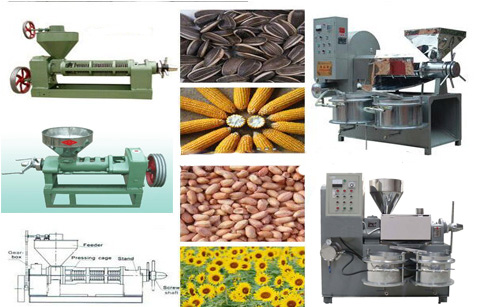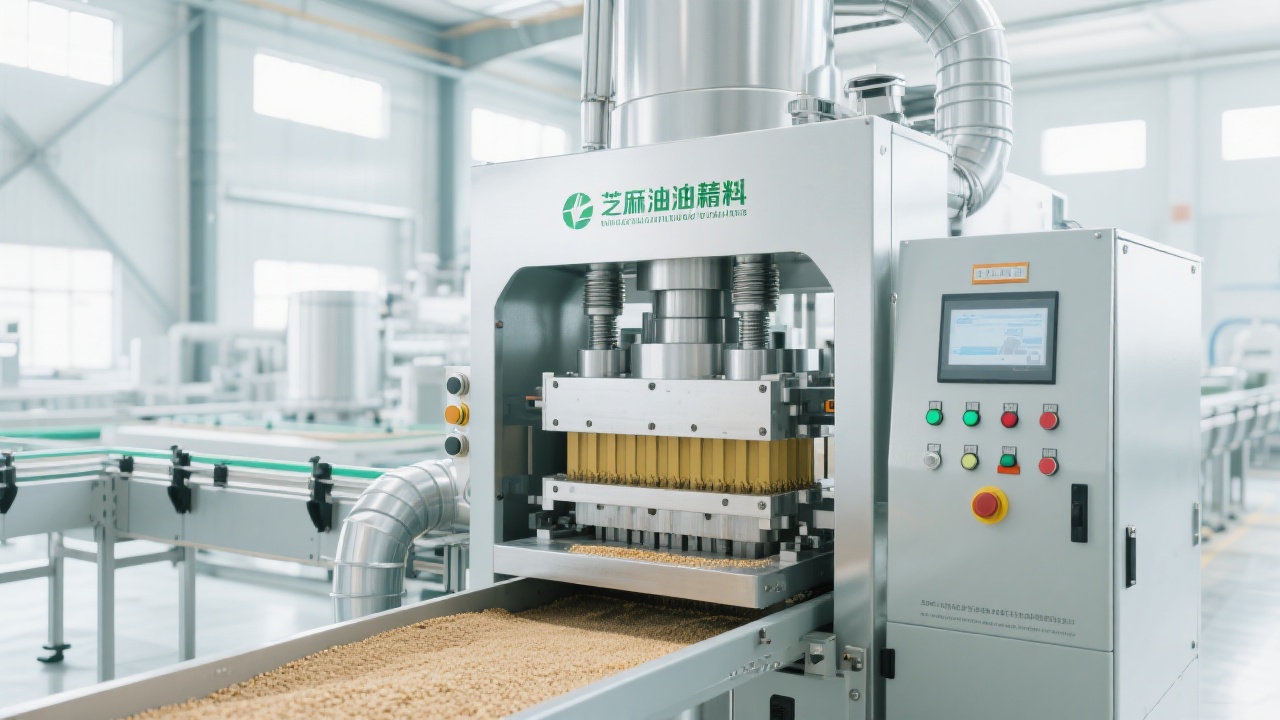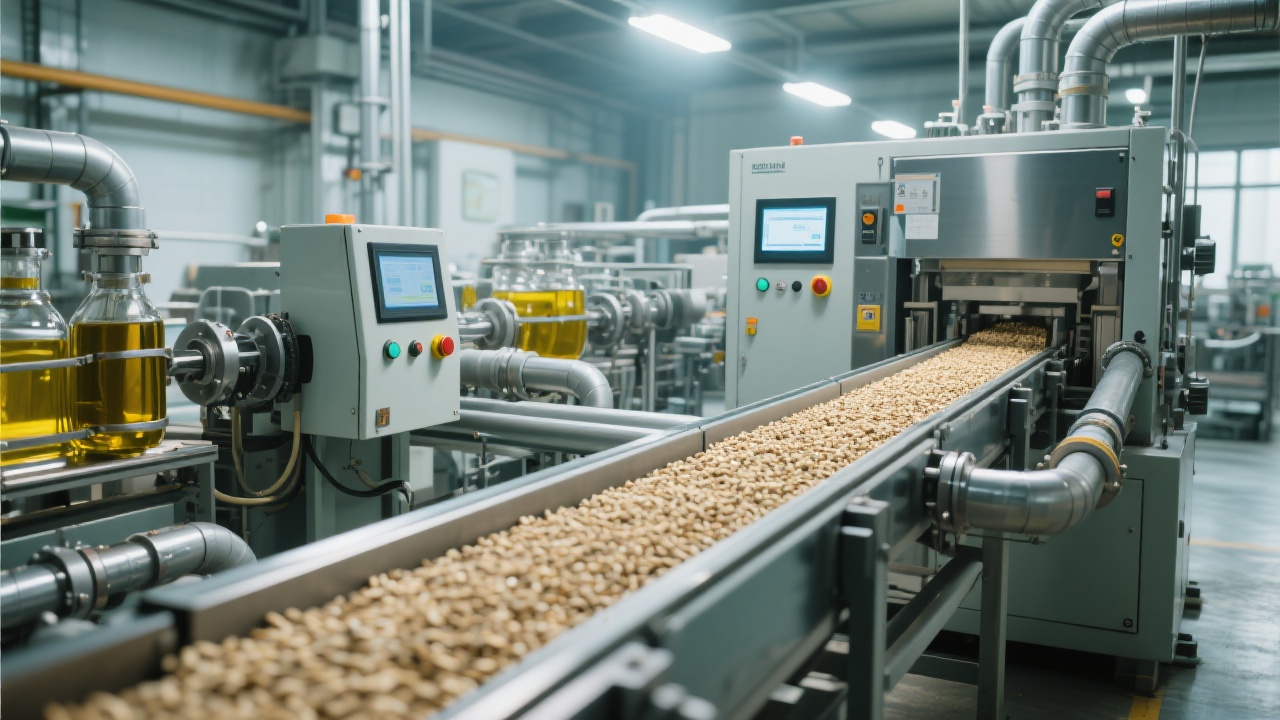
In the global market, high - quality sesame oil has always been in high demand. However, for many small and medium - sized oil - pressing enterprises, achieving large - scale production of high - quality sesame oil is still a challenge. This article will systematically analyze the entire process of an industrial - grade sesame oil production line, aiming to help these enterprises enhance their export competitiveness and meet the high - standard requirements of the international market.
There are two main methods for extracting sesame oil: cold pressing and hot pressing. Cold pressing is carried out at a relatively low temperature, usually below 60°C. This method can preserve the natural nutrients and flavors of sesame seeds, such as vitamin E, unsaturated fatty acids, etc. The sesame oil produced by cold pressing has a light color, mild flavor, and is often favored by consumers who value health and naturalness. In the market, cold - pressed sesame oil is often positioned as a high - end product, with a price that can be 20% - 30% higher than that of hot - pressed sesame oil.
On the other hand, hot pressing involves heating the sesame seeds to a higher temperature, typically between 120°C - 180°C. This process can increase the oil yield, but it may also cause some nutrient loss. However, hot - pressed sesame oil has a stronger and more intense flavor, which is popular in some regions where consumers prefer a rich - flavored oil. It is usually positioned as a mid - range to high - volume product in the market.

When it comes to pressing equipment, there are mainly three types: small - scale, semi - automatic, and industrial - grade.
Small - scale equipment is suitable for start - up enterprises or those with a small production volume. It is relatively simple to operate and has a low investment cost. For example, a small - scale manual cold - pressing machine can produce about 50 - 100 liters of sesame oil per day. However, its production efficiency is low, and the quality control may not be as stable.
Semi - automatic equipment is a step up from small - scale equipment. It combines some automated functions, such as automatic feeding and temperature control. This type of equipment can increase production efficiency and improve product quality to a certain extent. A semi - automatic hot - pressing machine can produce around 200 - 500 liters of sesame oil per day, which is suitable for small and medium - sized enterprises with a certain production scale.
Industrial - grade equipment is designed for large - scale production. It has high - level automation, advanced temperature control systems, and strict quality control mechanisms. An industrial - grade continuous sesame oil production line can produce more than 1000 liters of sesame oil per day. Although the initial investment is large, it can significantly reduce labor costs and improve production efficiency in the long run.
The industrial - grade sesame oil production line mainly includes the following core steps:

According to industry best practices, key parameters such as temperature and automation degree have a significant impact on product quality and stability. For example, in the high - temperature pressing process, if the temperature is too high, it may cause the oil to oxidize and produce harmful substances, reducing the quality of the oil. On the other hand, if the temperature is too low, the oil yield will be affected. Therefore, precise temperature control is crucial.
Automation degree also plays an important role. A high - level automated production line can reduce human error, ensure consistent product quality, and improve production efficiency. For instance, an automated temperature control system can adjust the temperature in real - time according to the production process, ensuring the stability of the oil quality.
For small and medium - sized enterprises, here are some practical suggestions to optimize the process, improve efficiency, and enhance export adaptability:

An industry expert said, "In the international market, consumers are increasingly demanding high - quality and healthy sesame oil. Enterprises need to continuously improve their production technology and quality control to meet these requirements."
A customer case shows that a small - sized oil - pressing enterprise in Asia upgraded its equipment to an industrial - grade semi - automatic production line. After three months of operation, the production efficiency increased by 50%, the product quality improved significantly, and it successfully entered the European market. This not only increased its export volume but also enhanced its brand image.
In conclusion, high - quality sesame oil production equipment is the key tool to enhance export competitiveness. By choosing the right equipment, optimizing the production process, and strictly controlling product quality, small and medium - sized oil - pressing enterprises can produce high - value - added sesame oil products and gain a foothold in the international market. Click here to learn more about high - quality sesame oil production solutions and let every drop of sesame oil be trustworthy!
Do you have any questions or experiences in sesame oil production? Feel free to leave a message and share your thoughts!

